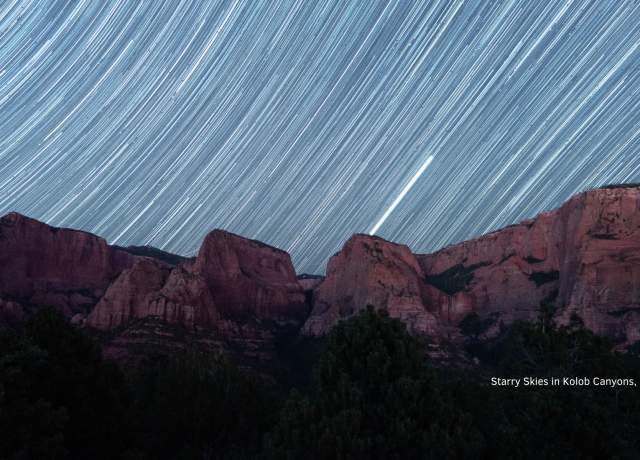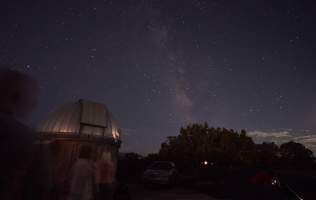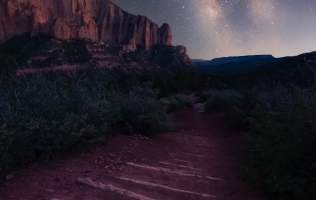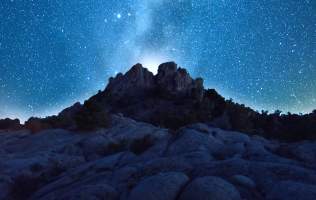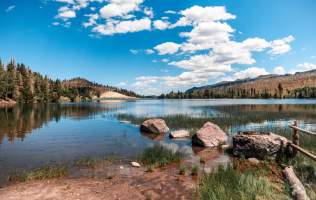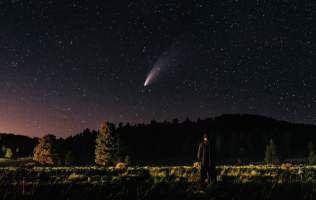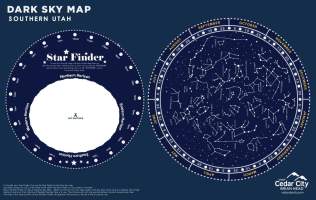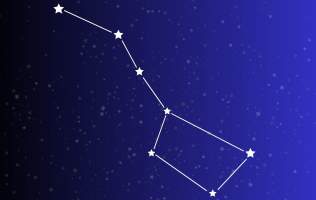Dark Sky Parks & Stargazing
With beautiful dark sky views throughout the state of Utah, and Cedar City's rural placement, it's no surprise that incredible dark sky views can be found all around us. Many of which come with unique landscapes and adventure opportunities in the day, followed by stunning views at night.
A short drive from Downtown Cedar City (40 minutes) you can visit an International Dark Sky Park with guided star tours from Cedar Breaks National Monument rangers. Or opt for a quiet evening camping beneath the stars in Three Peaks Recreation Area (15 minute drive) on rolling hills of lava rock and miles of mountain bike trails.
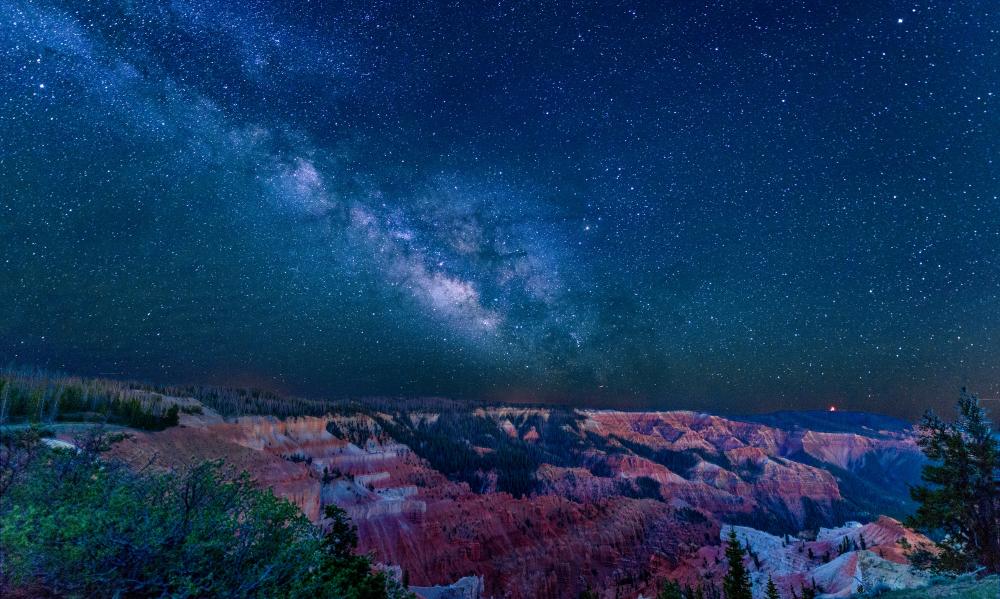
Dark Sky Views in Cedar Breaks National Monument | PC Mike Saemisch
Cedar Breaks National Monument
International Dark Sky Park
A beautiful red rock amphitheater with hoodoos and sweeping canyons, visible along hiking trails and scenic overlooks during the day, the views at Cedar Breaks stun during the day and at night. After a day at the overlooks and exploring the hiking trails and meadows, park rangers guide visitors through the night sky and constellations around us at Star Parties. Every weekend when the sunset fades and the stars come out, visitors can experience an unbelievable view from 10,000 feet in elevation.
Things to Know:
- Cedar Breaks became an International Dark Sky Park in March of 2017.
- Dark skies at Cedar Breaks should be enjoyed from scenic overlooks or the Point Supreme Campground
- Telescopes are available at the Point Supreme Overlook on weekends during Star Party events
- Find a Star Party that aligns with your visit using the calendar included here.
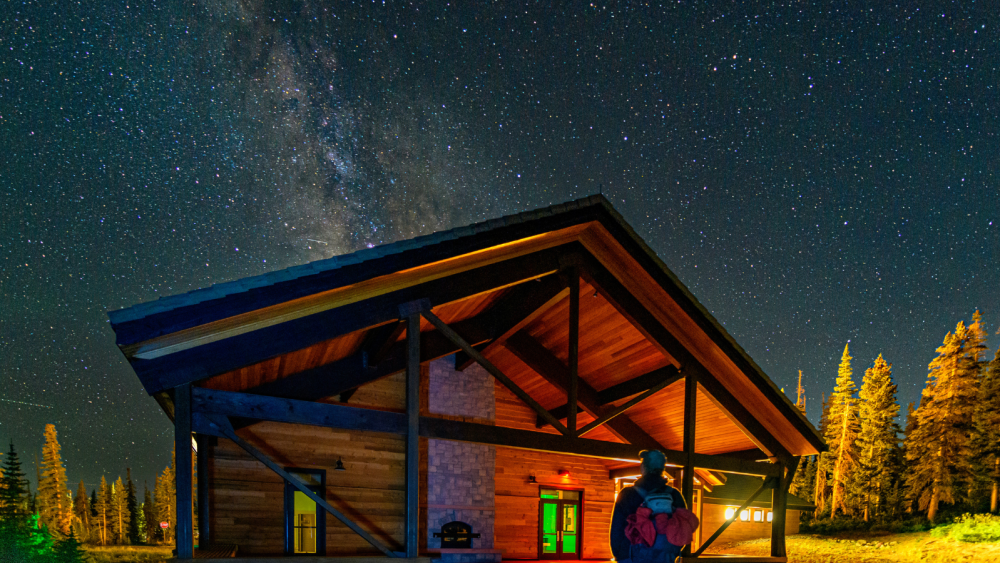
Where to Go Stargazing
Other Places Around Town We Love for Stargazing
With a rural placement and plenty of spaces around us that are removed from city lights, there are some great stargazing spots around Cedar City, Parowan, and Brian Head that our team recommends for a quiet evening with incredible views. Browse the list below to find some of our favorites.
Stargaze without leaving Cedar City with a guided experience at Ashcroft Observatory.
Year-Round. The north side of Zion National Park, the views here are beautiful.
Year-Round. Play on rolling hills, two disc golf courses, and mountain bike trails.
Summer - Fall. Fish during the day and camp beneath beautiful starry skies.
Summer - Fall. Camp at Navajo Lake and take in incredible views.
What Information Would Help Me?
When you head out to stargaze, it's best to be prepared! From packing extra layers to making sure that you're on public land and not private, there are a few guidelines to use for the best experience possible.
- Pack layers, we live in a desert and it gets cold at night!
- To help find constellations download a map, or stargazing app beforehand.
- We love apps like SkyView, NightSky, or Pocket Universe.
- To help navigate at night without compromising the night sky views, make a red flashlight.
- Use red paper or cellophane to cover a white flashlight.
- Check out a telescope! There are some available at the Cedar City Visitor Center and Cedar City Library.
- The Milky Way is best seen in summer and fall evening skies.
Navigate the dark skies around us with this year-round dark sky map.
Download spring stargazing constellation chart.
Download a Year-Round constellation chart.
Find summer constellations.
Find fall constellations.

